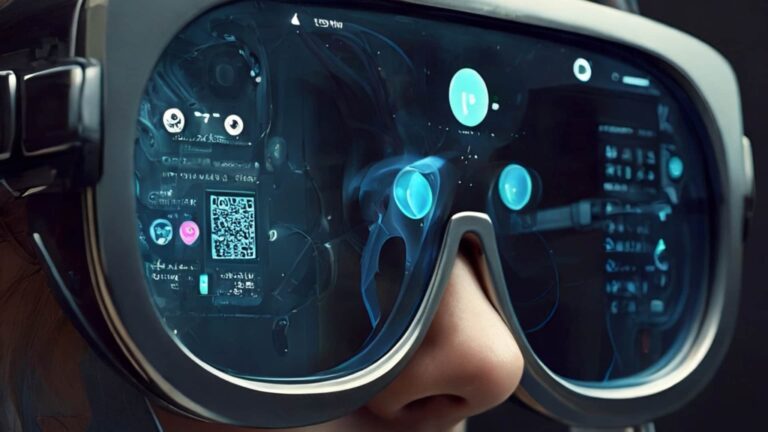
Could artificial intelligence’s integration into spatial computing help make it mainstream? And can AI’s integration change what you expect to get out of spatial computing? This is already underway, with ample growth and opportunity to come.
AI’s Role in Spatial Computing
Backing up, spatial computing covers any kind of human-computer interaction where the virtual and physical environments merge. Instead of being bound to a keyboard and screen, you interact with augmented elements in multiple dimensions in the real world. This tech layers digital content on top of your existing reality to enhance it.
This technology typically uses some combination of computer vision, spatial mapping, virtual reality (VR) and AR. Its core components include cameras, sensors, software, and physical controls. The point is to make all surfaces user interfaces, letting you break free from screens.
Recently, AI entered the picture. Its integration is unsurprising, considering its market value is expected to be over $184 billion in 2024. Technologically, it’s also the next logical step. Even businesses that aren’t usually on the brink of digitalization are adopting it.
It’s doing exceptionally well in spatial computing as a back-end and front-end technology. With the AR and VR market expected to reach $294 billion in 2024, companies needed to make huge advancements to remain competitive and come out on top. AI promises to give them that edge because it’s unlike any other modern tech.
How Does AI Interpret Spatial Data in Real Time?
AI can analyze unstructured data, including images, audio files, videos, and sensor readings. Unlike similar technologies, it can process information from your surroundings in seconds. With the help of cameras and sensors, it can determine where you’re standing and what you’re looking at. These insights help make your experience more seamless.
How frustrating would it be to wave your hand in front of your face and change positions to get your headset to recognize something? With AI, you won’t have that issue. Since an algorithm can process data lightning-fast and come to a conclusion without your input, it would instantly identify your surroundings.
Incorporating AI into spatial computing is essential for creating accurate, realistic AR experiences. It shortens the time between your input and your device’s output, making the process more immersive and responsive. Eliminating digital hiccups blurs the boundary between the physical and virtual worlds in a good way.
How AI Improves Spatial Computing
When combined with spatial computing, AI constantly works in the background and your line of sight to enhance your AR experience. In the back end, it interprets real-world information and optimizes performance. In the front end, it makes predictions, provides guidance and makes recommendations. Both processes immerse you in a multidimensional, blended environment.
Imagine you’re relaxing in a coffee shop when you notice someone wearing a great outfit. Unfortunately, they seem in a hurry, and you don’t want to stop them to ask where they bought it. With AI-powered spatial computing, you could simply ask the algorithm where to buy those clothes. It would pull up the exact product pages in real time.
Consider a different scenario where you’re walking downtown trying to find a good spot for lunch. Instead of scrolling through dozens of listings or swiping around your maps app, you’d use your AI-powered headset. You’d see reviews, pricing and hours hovering in front of the storefronts as you pass. It could even display real-time directions along the sidewalk.
Many companies have haphazardly hopped on the AI trend just to say they have. However, you don’t have to worry about this tech being overhyped since companies will be penalized for “AI washing” their products. Regulatory agencies will crack down on those claiming their algorithms are more advanced or innovative than they are because it’s seen as deceptive marketing.
AI’s ability to rapidly process data, make predictions based on trends and recognize hidden patterns means it can handle a ton of incoming information. This advancement is essential for making spatial computing feel like an intuitive, modern must-have instead of a frustrating pseudo-prototype.
Spatial Computing Uses Made Possible by AI
AI makes advanced object recognition possible. These algorithms can accurately recognize objects within milliseconds. The best systems are almost on par with humans, which is an impressive feat for any piece of modern tech. Whether you want to know where a stranger got their outfit, or you come across a weird object and are curious about it, this tech can help.
Scene reconstruction is another big one. Usually, spatial mapping tech reconstructs your screen or surroundings. AI opens up new capabilities. It can finish incomplete or blurry images, sharpening them and filling in the blanks. It can also precisely interpret your eye and hand movements to adjust the scene better.
AI’s role in spatial computing extends beyond improving processing speed and making interactions more accurate. It could personalize every user’s AR experience, molding the tech to match their intentions. While there’s no telling what the future holds, there’s a good chance it could make this technology mainstream.
What Does This Integration Mean for AR?
For many people, scrolling through restaurants on their phone is enough — they’re not convinced a headset would be life-changing. If VR and AR companies want to bridge the gap, they must make spatial computing feel like a transcendent modern experience.
 Devin Partida is Editor-in-Chief at ReHack Magazine and editorial contributor at AR Insider. See her work here and follow her @rehackmagazine.
Devin Partida is Editor-in-Chief at ReHack Magazine and editorial contributor at AR Insider. See her work here and follow her @rehackmagazine.

